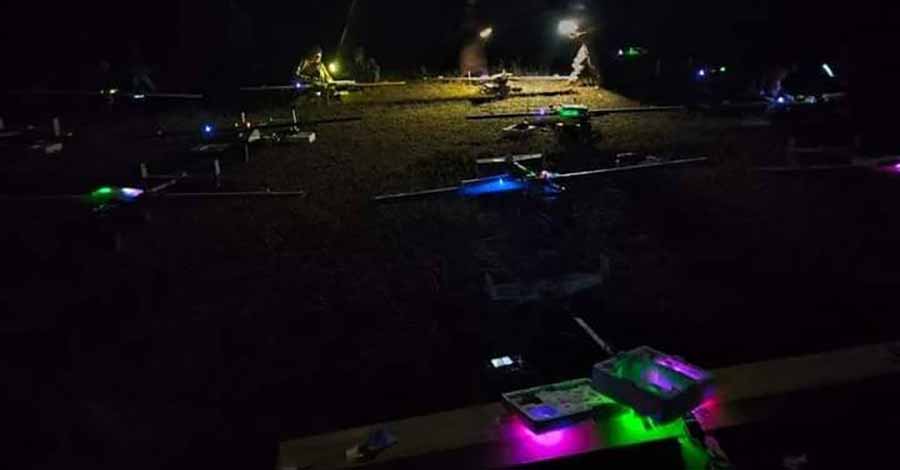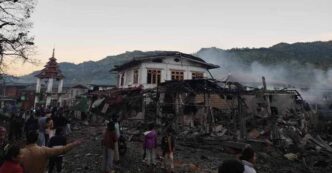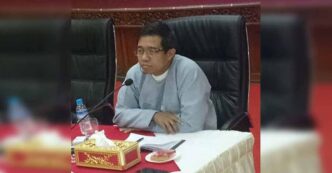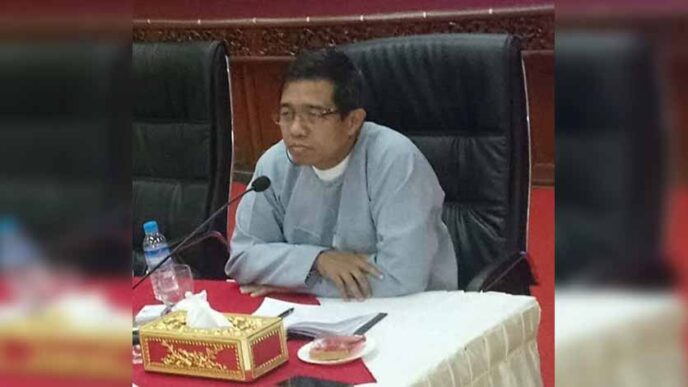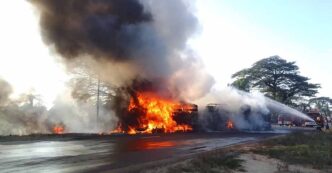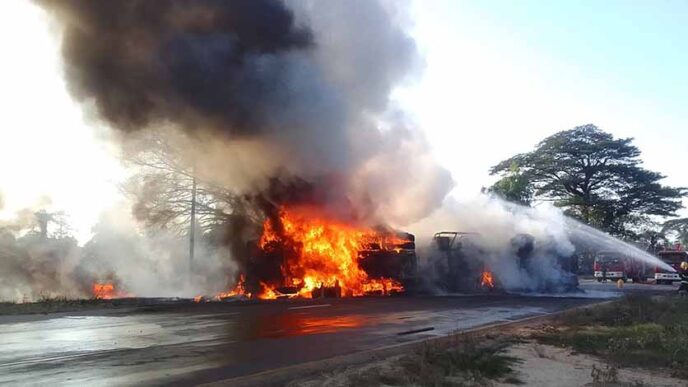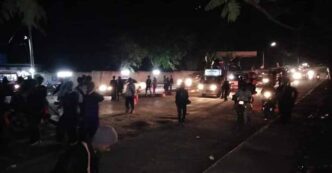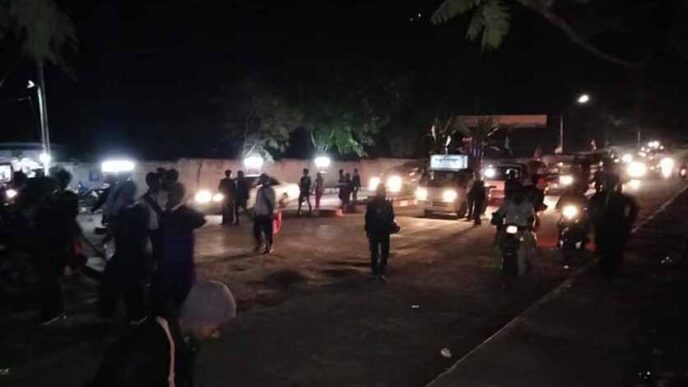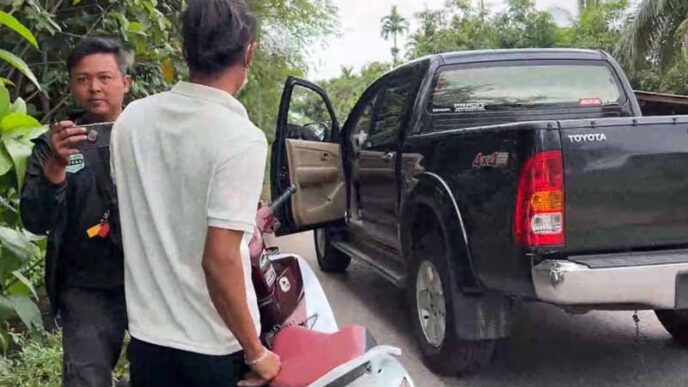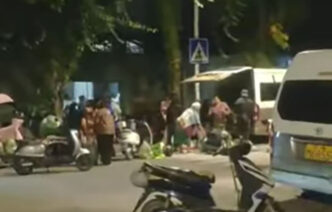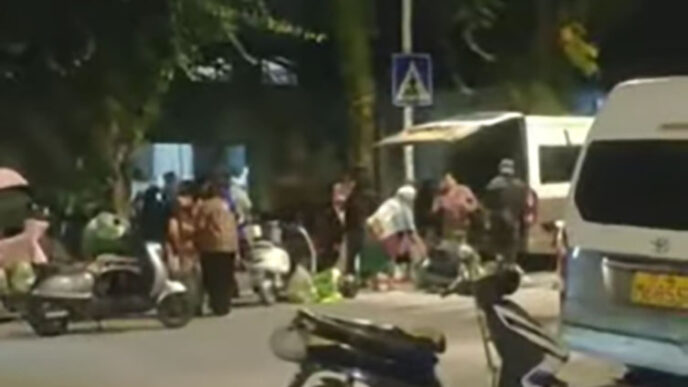On November 11th, an early morning drone attack targeted the Shan Tae Air Force Base in Mandalay Division’s Mithila Township, resulting in significant damage, including the destruction of two Y12 planes. The attack also left six officers and soldiers injured. This article details the damage caused, the methods used in the attack, and the reactions from the involved groups.
1. Shan Tae Air Base Attack: Drone Strike Causes Significant Damage
Y12 Aircraft and Buildings Damaged in the Strike The early morning assault on Shan Tae Air Base used a total of 24 drones armed with Sha Htoow technology. According to sources within the Mithila Township PAKAF group, the attack targeted military production units near the air base, damaging two Y12 warplanes and two production buildings. The military personnel stationed there were also affected, with six injured in the strike.
Injuries Reported Among Military Officers and Soldiers Among the injured were two officers and four soldiers, including a major. The attack also caused significant disruption to other facilities, including officer housing, ammunition storage, and radar stations. The military council forces are reportedly conducting aerial bombardments in an effort to counter such attacks, but the recent strike proved successful for the revolutionaries.
2. Drone Technology and Revolutionary Forces’ Impact
Use of Advanced Drone Technology in the Attack The drone attack on Shan Tae Air Base was described as a “special drone operation” by the Mithila Township PAKAF group. The drones, valued at $35,000 each, were launched with the technical support of the Sha Htoow Wong Technology Group. Despite the loss of seven drones during the operation, the revolutionary forces managed to strike critical military targets effectively.
Overcoming Technology: A Message of Resistance A spokesperson from the Mithila Township PAKAF group emphasized that the revolutionary forces are capable of overcoming even the military’s advanced technology. The statement highlighted the long-term efforts and difficulties involved in reaching this point, as well as the resilience of the revolutionaries despite the military council’s overwhelming resources.
3. Immediate Aftermath of the Attack on Shan Tae Air Base
Military Response and Civilian Impact After the attack, military forces reportedly confiscated mobile phones from residents of the airbase and dispatched fire trucks to extinguish the fires caused by the strikes. The attack’s immediate aftermath saw heightened security measures, but the revolutionaries claimed that their objectives were successfully achieved, including targeting the radar station and critical production units.
Support and Coordination of Revolutionary Forces The strike was carried out with the coordination of various revolutionary groups, including the Mithila Township PAKAF, the 8th Battalion from Myengkham District, and support from the National Unity Government. The attack also received technical assistance from the Sha Htoow Wong Technology Group, which played a crucial role in the operation’s success.
4. Uncertainty and Ongoing Tensions at Shan Tae Air Base
Lack of Independent Confirmation of Damage As of now, there has been no independent confirmation of the damage caused by the attack, as the military council has not released any official information. The situation remains tense, with the revolutionary forces continuing to carry out operations aimed at weakening the military council’s hold over key installations.
The Rising Impact of Drone Warfare in Myanmar This attack on Shan Tae Air Base marks a significant escalation in the use of drones in the ongoing conflict between Myanmar’s military council and revolutionary groups. As both sides adapt to this evolving form of warfare, drone technology is becoming an increasingly important tool in the struggle for control over the country’s military infrastructure.
The Growing Influence of Drone Attacks in Myanmar’s Conflict
The recent drone strike on Shan Tae Air Base demonstrates the growing impact of drone warfare in Myanmar’s ongoing conflict. While the military council continues to rely on traditional air power, revolutionary forces are utilizing advanced technology to strike key military targets, disrupting operations and challenging the military’s dominance. The continued use of drone attacks suggests that this form of warfare will play a pivotal role in shaping the future of the conflict.

